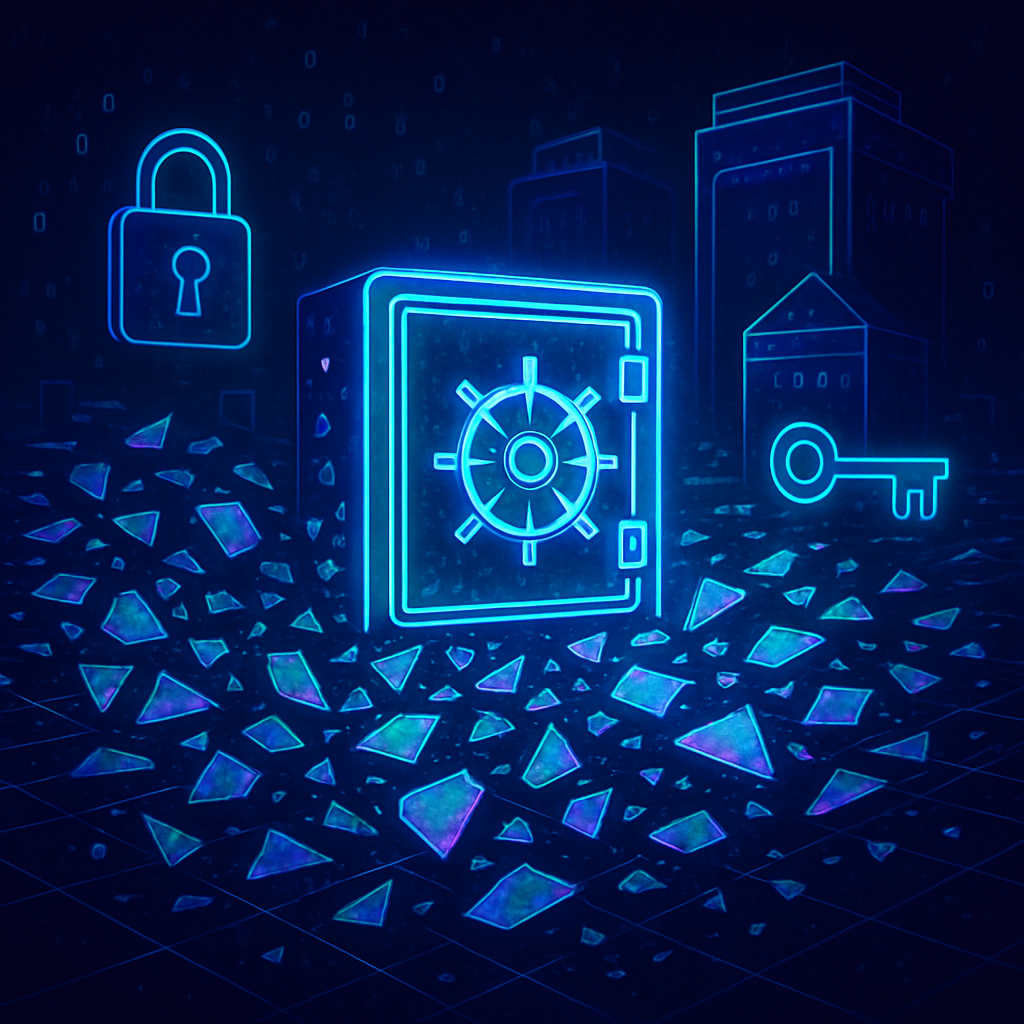Going Agentless: A File Encryption Guide
Your new encryption solution seemed like a security win at first. Your company’s data was protected, and everything seemed straightforward and simple.
Then came the issues. Each device for each team member needed to be configured individually. Some people had their laptops slow to a crawl, and others couldn’t integrate their cloud services with the new software. Updates became a logistical nightmare. Performance bottlenecks started appearing right and left.
The culprit? Encryption agents.
Today, file encryption stands as a critical defense mechanism for protecting sensitive data. But not all encryption approaches are created equal. In this post, we’ll dive into the key differences between agent-based and agentless file encryption, helping you understand which strategy might best protect your organization's digital assets.
Understanding File Encryption — And Its Limitations
At its most basic level, encryption is a process that transforms readable data (known as plaintext) into an unreadable, scrambled format (called ciphertext), rendering it unintelligible to unauthorized users. Encryption underpins virtually every secure digital interaction — from online purchases to confidential business communications — in virtually every sector.
There are two main types of encryption: symmetric (or private key) encryption and asymmetric (or public key) encryption. The former uses the same key to both encrypt and decrypt files, while the latter uses two mathematically related but distinct keys.
While encryption is a powerful security measure, it’s not a failsafe solution. Different encryption approaches offer varying levels of protection, and each comes with its own set of drawbacks or vulnerabilities. (For instance, symmetric encryption is fast, but it’s less secure than asymmetric encryption, which in turn requires more computing power.)
Standard encryption methods protect data against unauthorized access, but they struggle with more sophisticated threats like ransomware and the future of quantum computing attacks. The real-world effectiveness of encryption ultimately depends on multiple factors: the strength of the encryption algorithm, the length and complexity of the encryption key, the specific implementation method, and more.
Encryption is also just one layer of a comprehensive security strategy. It provides robust protection against data theft and unauthorized access, but it can’t singlehandedly prevent all cyber threats. Ransomware attacks, for example, can still encrypt already-encrypted files to lock users out of their own data.
So, while encryption is crucial, it has to be complemented by other security measures like robust backup systems, access controls, and data resilience solutions to be truly effective.
What Are Encryption Agents?
Encryption solutions come in two main types: agent-based and agentless. Agent-based encryption solutions require installing specific software components, a.k.a. agents, on each device or system that needs protection. Think of these agents like security guards stationed at every endpoint of your digital infrastructure.
There are several benefits to agent-based encryption, including more granular control over individual systems and more detailed logging and monitoring capabilities. For instance, agents can track file-level interactions, monitor access patterns, and generate audit trails for compliance. They can also be used to implement customized encryption policies tailored to specific device types or user roles.
But agent-based encryption also has some distinct disadvantages. Complexity, for one: Each device requires individual software installation, configuration, and ongoing management, which can mean substantial administrative overhead and disruptions to everyday operations. The performance impact of endpoint agents can also be considerable, slowing down device performance and impacting user productivity.
Agentless Encryption: A Modern, Streamlined Alternative
In contrast to agent-based encryption, agentless encryption protects data without requiring any software components on individual endpoints. Instead of having guards at the door, it’s like having an adaptable security shield that moves with your data regardless of where it’s stored.
Agentless encryption offers much more convenience and much less management complexity. Unlike their agent-based counterparts, agentless solutions can be implemented quickly and seamlessly across entire organizations, reducing the time and resources typically required. This approach is particularly useful for organizations that manage massive file repositories spanning terabytes of data across on-prem, cloud, and hybrid or multi-cloud environments.
With low latency and fast throughput, agentless encryption solutions ensure that data protection doesn’t come at the cost of operational efficiency. Because they’re designed to integrate easily across different platforms and systems, companies can avoid changes to user workflows and resource-intensive retraining.
While there are advantages to both agentless and agent-based encryption, the right agentless solution can offer robust data protection without hampering productivity, scalability, or user behavior.
How To Choose an Encryption Strategy
Selecting an encryption strategy is more complicated than simply picking out a piece of software. It’s about aligning your company’s security measures with its broader business objectives, risk management frameworks, and regulatory requirements.
For organizations subject to regulations like SOX, HIPAA, or PCI DSS, encryption solutions have to satisfy specific compliance requirements. But those solutions can’t get in the way of critical operations; medical professionals will still need seamless access to patient data, for instance, and fintech customers will still need a smooth user experience on their banking platform.
Data resilience is another consideration. Not all encryption solutions offer equal protection against sophisticated threats like ransomware, quantum computing, and data exfiltration, and a defense-in-depth approach is crucial.
Performance impact can also make or break an encryption strategy. The most secure software in the world will be ineffective if it grinds the company’s operations to a halt — meaning that the right encryption solution has to provide robust data protection with minimal disruptions to existing workflows.
At the end of the day, there’s no universal “best” encryption method. Some organizations will find that they still want the granular control of agent-based solutions, but many will be increasingly drawn to the ease and efficiency of agentless solutions. The most effective strategy is ultimately the one that can evolve alongside your organization, offering flexibility and scalability while meeting the specific needs of your industry and your IT infrastructure.
Going Agentless: File Encryption with ShardSecure
ShardSecure’s agentless file encryption technology offers robust data protection without the performance drawbacks and management requirements of agent-based solutions.
Our platform uses strong FIPS 140-3 compliant encryption and microsharding technology to safeguard sensitive data at rest — allowing organizations to secure their data without the cost and complexity of agent-based software.
The ShardSecure platform provides strong data resilience and ransomware mitigation as well as protection against quantum computing attacks and Harvest Now Decrypt Later threats. Its easy plug-and-play implementation means that workflows don’t need to be changed and employees don’t need to be retrained. For more information, visit our resources page.
Sources
How Encryption Works | Global Encryption Coalition
Agentless vs Agent-Based Security | Palo Alto Networks
What Is Agentless Cloud Security? | SentinelOne
Quantum Computing Could Threaten Cybersecurity Measures | World Economic Forum







